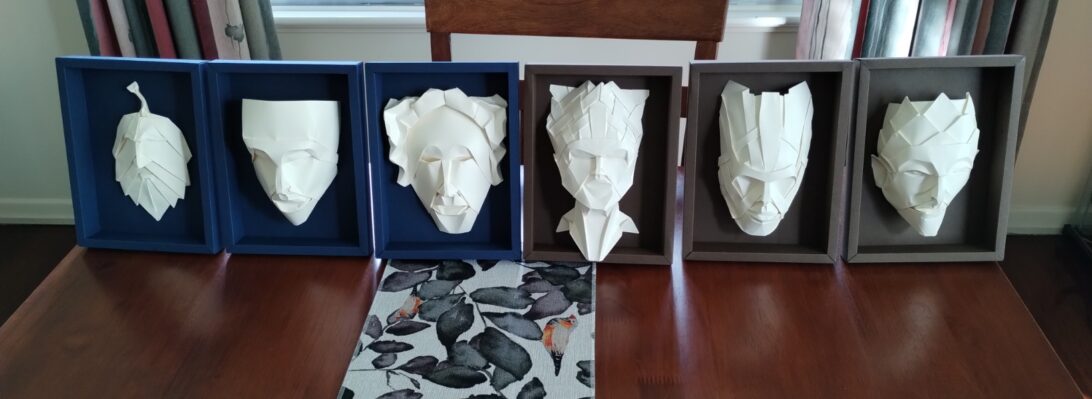Digging through my stash, I found a large sheet of yellow Crumpled VOG paper. Remembering I had never done a presentation fold of Brian Chan’s “WALL-E”, I knew I had found the right model for the paper:

The original character – a (Disney) Pixar masterpiece is a lovely little character piece with one of the most expressive robots ever on film. The design is intense, eats paper like nothing else but results in features that are instantly recognisably “WALL-E”.

Squaring up the paper, I managed a 60cm square from the sheet, cleaving wisps of 3 sides and a strip off the bottom. The strip was later used to coat some armature wire to keep him in shape – the model has some lovely deep pleats that allow you to hide structural supports to give the model some longevity.
VOG paper is particularly great for super-complex models because it is really tough, takes creases well and the texture persists, even after extensive working.
Continue reading






















